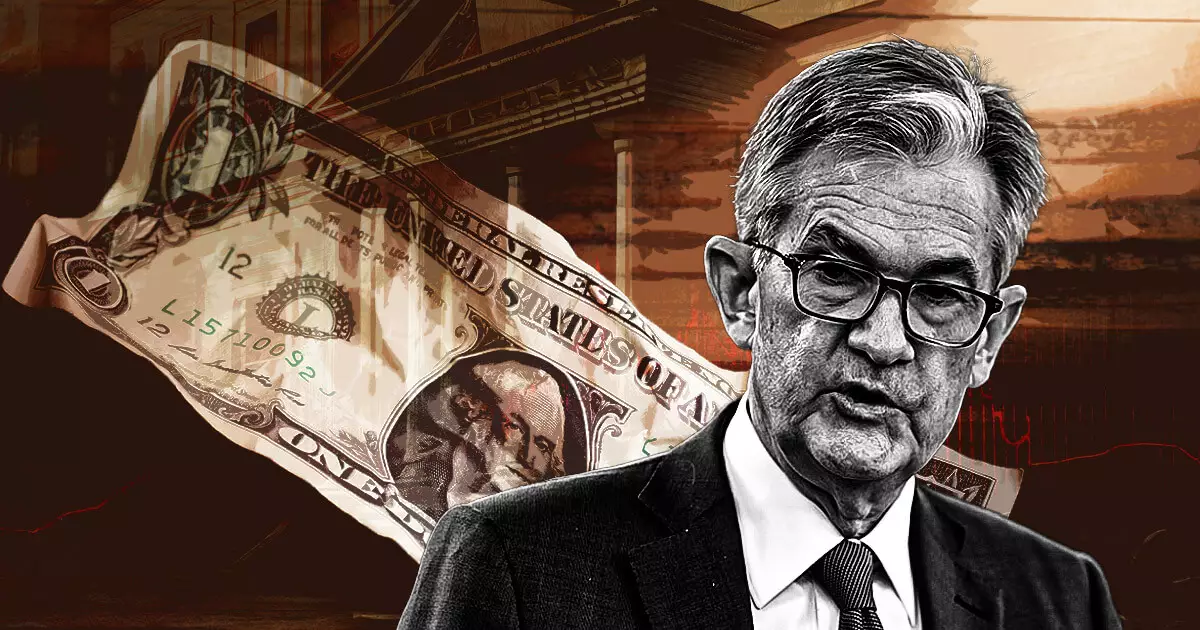In the evolving landscape of digital finance, stablecoins represent a compelling bridge between traditional monetary systems and the burgeoning world of cryptocurrencies. Federal Reserve Chair Jerome Powell has recently underscored the urgent need for a robust regulatory framework to oversee these digital assets. By reinforcing communication with Congress regarding stablecoins, Powell is marking a critical juncture in which the Fed appears poised to recognize the importance of adapting to the changing financial landscape. This new acknowledgment is not just about compliance but the realization that stablecoins can play a significant role in the future of financial transactions.
Powell’s recent statements during his address at The Economic Club of Chicago reflect a noticeable shift in the narrative around stablecoins from skepticism to cautious optimism. In a climate ripe for comprehensive legislation, both chambers of Congress are actively revisiting the frameworks pertinent to stablecoins. This development signals that lawmakers are beginning to understand the value of integrating these digital products, acknowledging their potential to cater to a wide consumer base beyond tech-savvy investors.
The Challenge of Regulatory Oversight
Despite the promising signal of cooperation between the Fed and Congress, prior attempts to establish a stablecoin framework faced persistent difficulties. Powell candidly noted the lack of success in earlier legislative collaborations but emphasized a “changing climate.” This insight provides a glimmer of hope, yet it also raises questions about the regulatory complexity that lies ahead. While there is an apparent desire to foster innovation within the financial sector, the balance between creativity and consumer protection remains crucial.
The inherent challenges of regulating stablecoins arise largely from their unique placement between conventional finance and new-age digital assets. Powell has articulated the pressing need for transparency in this space while highlighting that any regulatory adjustments should not compromise consumer safety. This is a delicate balancing act, requiring regulators to maintain oversight while simultaneously allowing for the innovation that could redefine modern payment systems.
Encouraging Responsible Innovation
Another noteworthy element of Powell’s commentary is the shift towards a more accommodating stance regarding banking interactions with the crypto industry. Powell is suggesting that a more flexible regulatory environment could exist if banks approach the digital asset sector responsibly. By indicating that the Fed is not inclined to restrict banks from working with legitimate crypto firms, Powell unveils an opportunity for collaboration rather than confrontation.
However, one must tread cautiously. A laissez-faire approach could have unintended consequences, particularly in safeguarding consumers from potential fraud. As stablecoins continue to grow—evidenced by their astronomical $14 trillion transfer volume last year, surpassing even Visa—it is vital that any emerging regulatory framework is designed to address the very real risks that come with rapid growth.
The Path Forward for Stablecoins and Traditional Finance
The implications of Powell’s perspective extend further into the interplay between financial innovation and established banking protocols. The acknowledgment that crypto custody and related services can coexist safely within Fed-regulated banks is significant. It reflects an understanding that the financial ecosystem is changing and that innovation does not inherently jeopardize institutional integrity.
Notably, the Fed’s commentary supports ongoing legislative efforts, such as the proposed GENIUS Act and the STABLE Act, which aim to create a cohesive regulatory environment specifically designed for stablecoins. This is a step in the right direction, yet it will require vigilant oversight to ensure that these digital assets contribute positively to the economy without exposing consumers or the financial system to undue risk.
In the grand scheme, Powell’s insights underscore a shift—one that recognizes the importance of stablecoins while also calling for a framework that emphasizes safety. As Congress grapples with this critical task, the integration of digital assets into conventional banking systems may one day become commonplace, provided that clarity and responsibility guide their evolution. The road ahead is long and fraught with challenges, but the dialogue initiated by Powell offers a promising start in transforming the fascinating but often murky world of stablecoins into a regulated and reliable component of our financial future.

